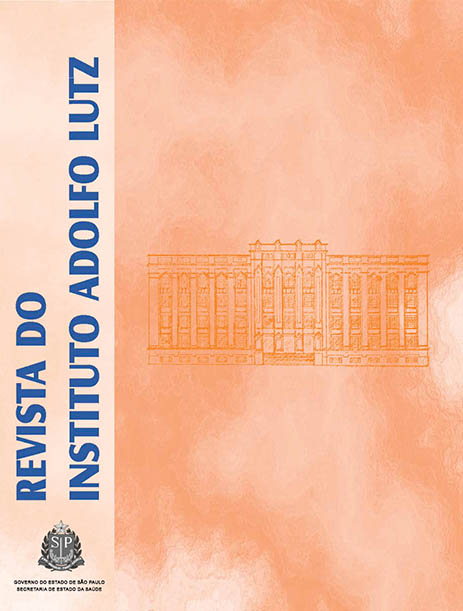Abstract
The present study was carried out using an alternative approach for validating the potency assay of Oral Polio Vaccine. Owing to the high variability of biological assays, two approaches were utilized to validate the test: the "International Conference on Harmonization" classical approach and the Total Error approach. The main parameters evaluated for the validation study were the trueness, precision and accuracy, seeing that it is a quantitative assay. Also, additional parameters were assessed: the assay adequacy to the acceptance criteria for validation described by the Food and Drug Administration (USA) by determining 20% as the maximum variability, the test reproducibility in a practical approach, using the variance among the potency results of 39 vaccine lots (from the same producer) obtained from the producer laboratory and from the National Control Laboratory, per sample, to calculate the overall geometric coefficient of variation. The Uncertainty of Measurement of Test was also determined. The potency assay has presented good trueness and precision what demonstrated suitable accuracy for the intended use in the two validation approaches.
References
1. US Department of Health and Human Services. US Food and Drug Administration - FDA. Center for Biologics Evaluation and Research - CBER. Guidance for industry: bioanalytical method validation. Rockville; 2001.
2. International Conference on Harmonization (ICH) of Technical Requirements for registration of Pharmaceuticals for Human Use, Topic Q2 (R1): Validation of analytical procedures: text and methodology. Geneva; 2005.
3. Gibelin N, Dupont D, Imbert S, Rozet E. Use of Total Error concept in the validation of viral activity in cell cultures. J Chromatogr B. 2009;877:2407-11.
4. Societé Française des Sciences et Techniques Pharmaceutiques – SFSTP. Commission report. Raymond B, Gaillandre A, Gibelin N, Maignan N, Michalski C, Nabet P, et al. Guideline for the validation of biological assay methods. STP Pharma Pratiques. 2005;15(5):364-83.
5. Brasil. Agência Nacional de Vigilância Sanitária. Resolução RE nº 899, de 29 de maio de 2003. Guia para validação de métodos analíticos e bioanalíticos. Diário Oficial [da] República Federativa do Brasil. Brasília, DF, 2 jun. 2003.
6. Instituto Nacional de Metrologia, Qualidade e Tecnologia - INMETRO (Rio de Janeiro, Brasil). Vocabulário Internacional de Metrologia: Conceitos Fundamentais e Gerais e Termos Associados (VIM 2008), Tradução autorizada - JCGM 200:2008. Rio de Janeiro; 2008.
7. ISO 5725, Application of the statistics-accuracy (trueness and precision) of the results and methods of measurement-Part 4, Basic methods for the determination of the trueness of a standard measurement method, International Organization for Standardization (ISO). Geneva; 1994.
8. Chapuzet E, Mercier N, Bervoas-Martin S, Boulanger B, Chevalier P, Chiap P, et al. Méthodes chromatographiques de dosage dans les milieux biologiques: Stratégie de validation Rapport d'une commission SFSTP. STP Pharma Pratiques. 1997;7:169-94.
9. Hubert Ph, Nguyen-Huu JJ, Boulanger B, Chapuzet E, Chiap P, Cohen N et al. Harmonization of strategies for the validation of quantitative analytical procedures A SFSTP proposal: part I. J Pharm Biomed Anal. 2004;36:579-86.
10. Mee RW. β-Expectation and β-Content Tolerance Limits for Balanced One-Way ANOVA Random Model. Technometrics. 1984;26(3):251-4.
11. Feinberg M, Boulanger B, Dewe W, Hubert P. New advances in method validation and measurement uncertainty aimed at improving the quality of chemical data. Anal Bioanal Chem. 2004;380:502–14.
12. Boulanger B, Dewé W, Gilbert A, Govaerts B, Maumy M. Risk management for analytical methods: conciliating objectives of validation phase and routine decision rules. Chem Intell Lab Sys. 2007;86:198-207.
13. Hoffman D, Kringle R. A Total Error Approach for the Validation of Quantitative Analytical Methods. Pharm Res. 2007;24(6):1157-63.
14. Eurachem. CITAC Guide CG4: Quantifying Uncertainty in Analytical Measurement, English edition, 2ª ed. Prague; 2000.
15. Instituto Nacional de Metrologia, Qualidade e Tecnologia - INMETRO (Rio de Janeiro, Brasil). A estimativa da incerteza de medição pelos métodos do ISO GUM 95 e de simulação de Monte Carlo, DIMEC, nt-02/2008. Rio de Janeiro; 2008.
16. Associação Brasileira de Normas Técnicas - ABNT (Rio de Janeiro - Brasil) NBR ISO/IEC 17.025:2005: Requisitos gerais para competência de laboratórios de ensaio e calibração. Rio de Janeiro; 2005.
17. World Health Organization - WHO. Polio Laboratory Manual, 4ª ed. Geneva; 2004.
18. World Health Organization – WHO. Manual of Laboratory Methods for testing of vaccines used in the WHO Expanded Programme on Immunization, Live Oral Polio Vaccine. Geneva; 1997. p.59-64. (WHO/VSQ/97.04).
19. Spearman C. The method of “right and wrong” cases (Constant Stimuli) without Gauss’s Formulae. Br J Psychol. 1908;2:227-42.
20. Karber G. Beitrag zur kollektiven Behandlung pharmakologischer Reihenversuche. Archiv fur Experimentelle Pathologie und Pharmakologie. 1931;162:480-7.
21. CombiStats v4.0 [homepage na internet]., EDQM: European Directorate for the Quality of Medicines & HealthCare – Council of Europe. Disponível em: www.combistats.eu
22. Council of Europe. Chapter 5.3 - Statistical analysis of results of biological assays and tests. In: The European Pharmacopoeia. 6ª ed. Strasbourg; 2008. p.571-600.
23. Farmacopéia Brasileira, 4ª ed. fasc. 5, São Paulo: Atheneu, 2003.
24. Cochran WG. The distribution of the largest of a set of estimated variances as a fraction of their total. Ann Eugen (London). 1941;11:47-52.
25. Cochran WG. Testing a linear relation among variances. Biometrics 1951;7:17-32.
26. International Conference on Harmonization (ICH) of Technical Requirements for registration of Pharmaceuticals for Human Use, Topic Q5A (R1): viral safety evaluation of biotechnology products derived from cell lines of human or animal origin. Geneva; 1999.
27. Kirkwood TBL. Geometric mean and measures of dispersion. Biometrics. 1975;35:908-9.
28. World Health Organization - WHO. Validation. Chp. 15, Validation of analytical assays. In: WHO guide to good manufacturing practice (GMP) requirements. Part 2. Geneva; 1997.p.65–73.

This work is licensed under a Creative Commons Attribution 4.0 International License.
Copyright (c) 2011 Instituto Adolfo Lutz Journal
